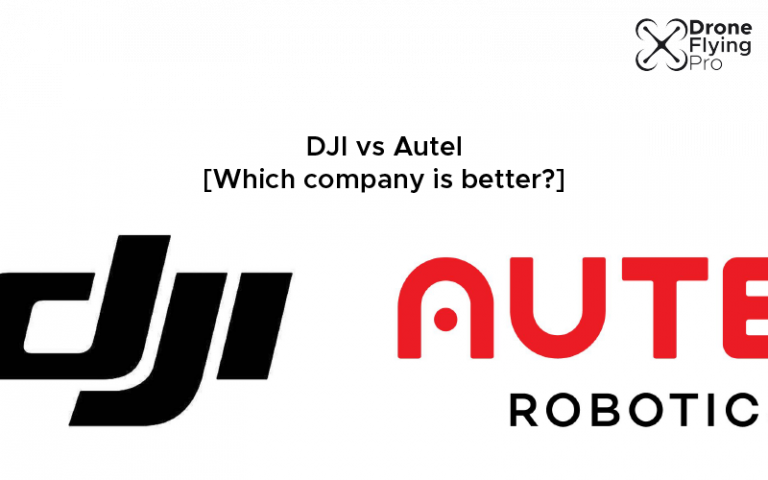Most people have heard of DJI drones. There are many other manufacturers of drones, but one that is finding its feet with the drone enthusiast community is Autel. Autel is a company founded a full eight years after DJI but pumps out consumer-focused drones with incredible capabilities that you should not ignore.
Both are fantastic drone companies producing high-quality consumer and enterprise drones. In 2021, DJI took a 54% market share and Autel a 7% market share. Even though DJI drones are more popular, the Autel drones are just as powerful and have some interesting advantages.
Even though most people’s first thoughts of purchasing a drone lie with the DJI variety of products, Autel has been slowly eating away at DJI’s market share with their fantastic array of mini drones.
DJI has been untouchable for many years (having a 94.1% market share in 2018). But, this has slowly been eroded over the years.
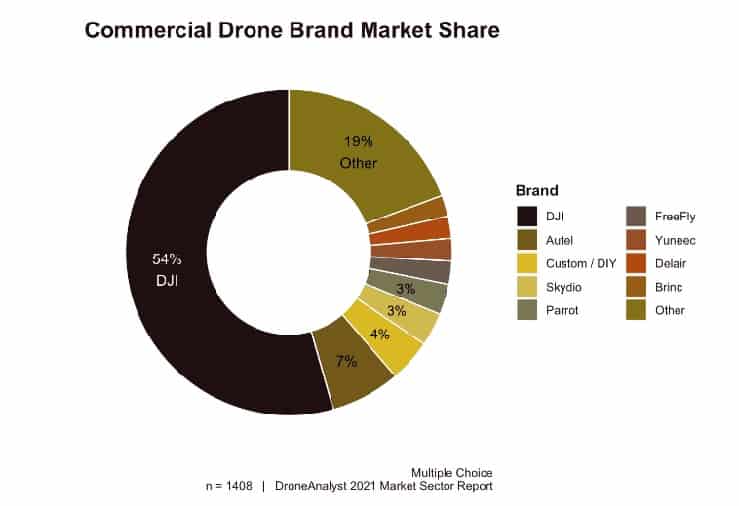
If you are in the market for a new drone, there is no doubt that Autel may produce a drone that is better suited to your use case.
Flagship Drone Comparison from DJI and Autel
One of the best ways to check out the differences between drone companies is to look at their most recent flagship drones and the hardware features that they are presenting.
In the table below, I have looked at the latest flagship drones from DJI and Autel and compared the most important features of the drone and camera.
| DJI Mavic 3 | Autel Evo 2 Pro | |
| Takeoff weight | 895 g | 1191 g |
| Max flight time(no wind) | 46 minutes | 40min |
| Max Hovering Time (no wind) | 40 minutes | 35min |
| Max horizontal flight speed | 5 m/s (C mode) 15 m/s (N mode) 19 m/s (S mode) | 20 m/s |
| Max Flight Distance | 30 km | 25 km |
| Max Service Ceiling Above Sea Level | 6000 m | 7000 m |
| Max Wind Speed Resistance | Level 6 (12 m/s) | Level 8 (17 – 20 m/s) |
| Hovering Accuracy Range | Vertical: ±0.1 m (with Vision Positioning); ±0.5 m (with GNSS Positioning) Horizontal: ±0.3 m (with Vision Positioning); ±0.5 m (with High-Precision Positioning System) | Vertical:± 0.02 m(when the visual positioning is working normally); ± 0.2 m(when GPS works normally) Horizontal:± 0.02 m(when the visual positioning is working normally); ± 0.5m(when GPS works normally) |
| Sensing System | Omnidirectional binocular vision system, supplemented with an infrared sensor at the bottom of the aircraft | Omnidirectional sensing system |
| Camera | ||
| Sensor | 4/3 CMOS, Effective pixels: 20 MP (main camera) | 1″ CMOS, Effective pixels: 20 MP |
| Lens | FOV: 84° Format Equivalent: 24 mm Aperture: f/2.8 to f/11 Focus: 1 m to ∞ (with autofocus) | 35 mm format equivalent focal length: 28.6 mm Aperture: f/2.8 – f/11 Focus range: 1 m to infinity (with auto focus) |
| Zoom | 4 x digital zoom | 1-16x (up to 3x lossless zoom) |
There is no doubt that DJI has produced an incredible drone with the Mavic 3. However, given the close specifications of the older Autel Evo 2, which beats the Mavic 3 in various specifications, I think that Autel has produced an incredible drone.
The Autel Evo 2 Pro beats the DJI Mavic 3 on its zoom feature, maximum service ceiling, wind resistance during flight, and slightly better maximum horizontal speed.
I think anyone purchasing either drone would be very happy with the 360° obstacle-sensing drone’s capabilities.
Sofware for DJI VS Autel
As a drone pilot, the main interaction you have with your drone during the flight is via the software on your app and the remote control that you used to pilot the drone.
There is no doubt that DJI have been able to refine their range of drone apps, including DJI GO4 and the DJI fly app.
Autel has the Explorer at to interface with their drones.
The two main displays look very similar and can be seen below.
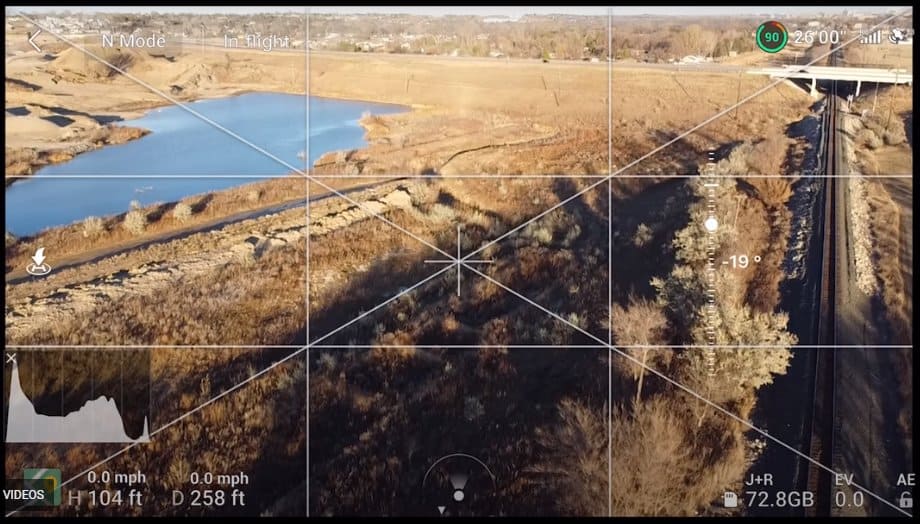
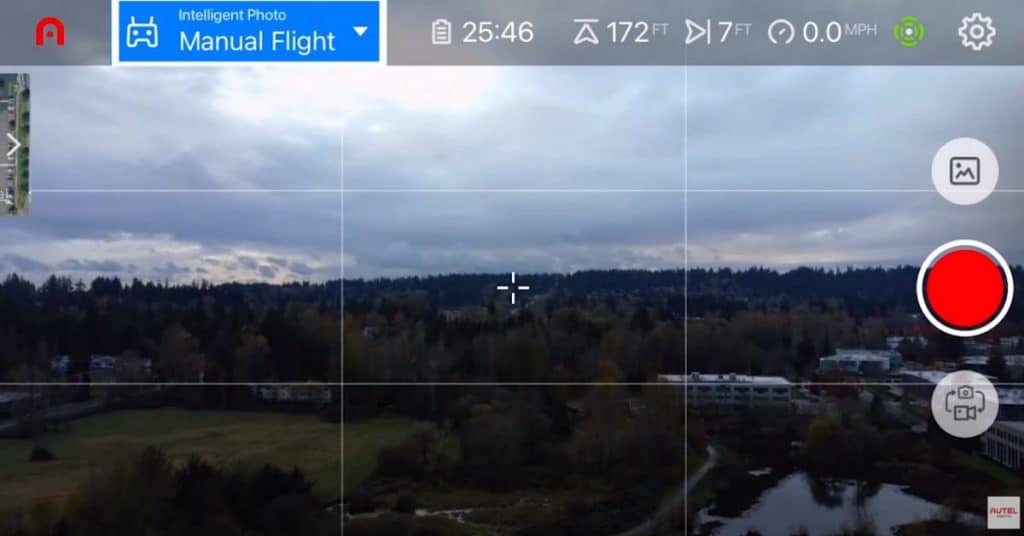
You will notice that the two apps have very similar layouts, and if you are used to flying in one, you’ll quickly be able to pick up the other.
You can find the downloads for each app below.
Both companies have been working hard to make the piloting experience as user-friendly as possible and will continue to update the interface and app in the future.
Arguably, DJI has a better user interface because they have so much more money to invest in making their app intuitive and user-friendly. However, there are no serious issues with the Autel explorer app and it can be used easily and securely.
Remote controllers
The remote control is where each manufacturer really differentiates itself.
Here is a picture of the Autel Evo two series remote control and the DJI Mavic 3 remote control.
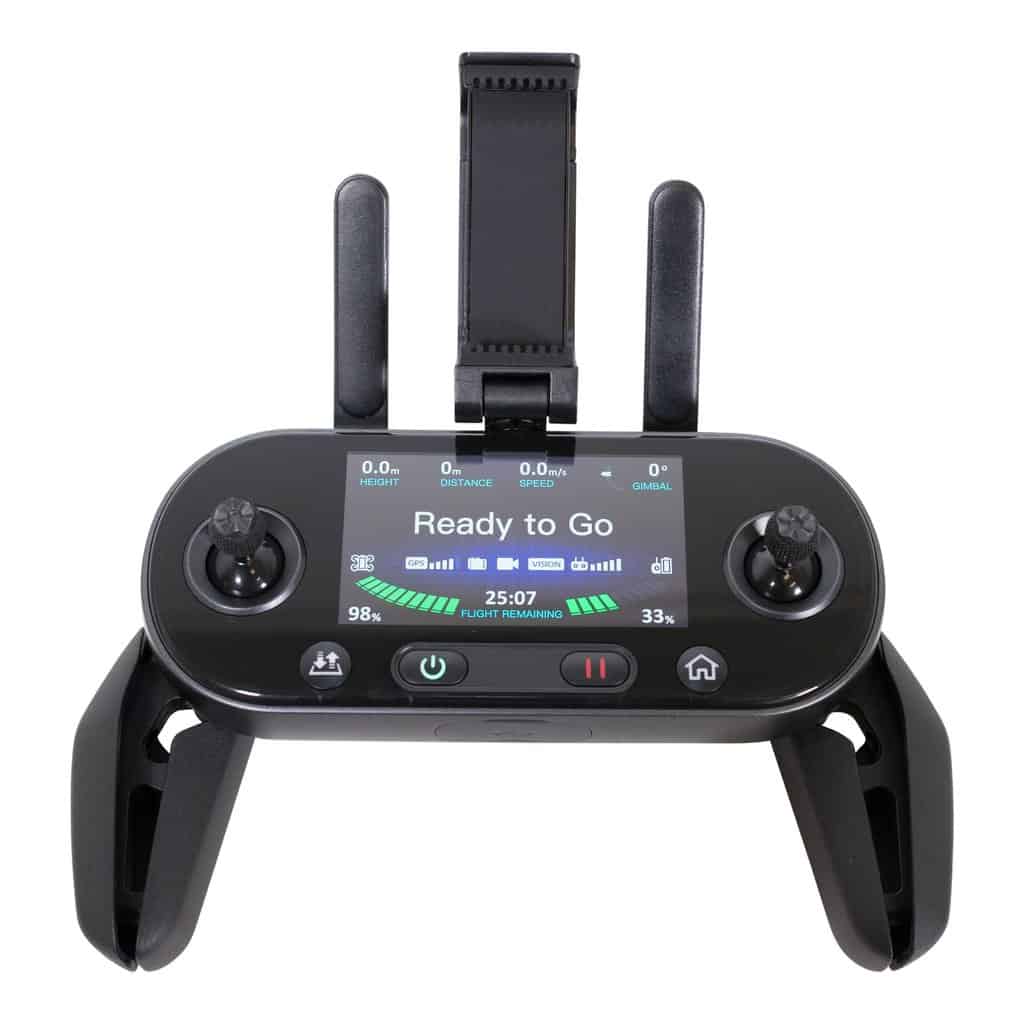
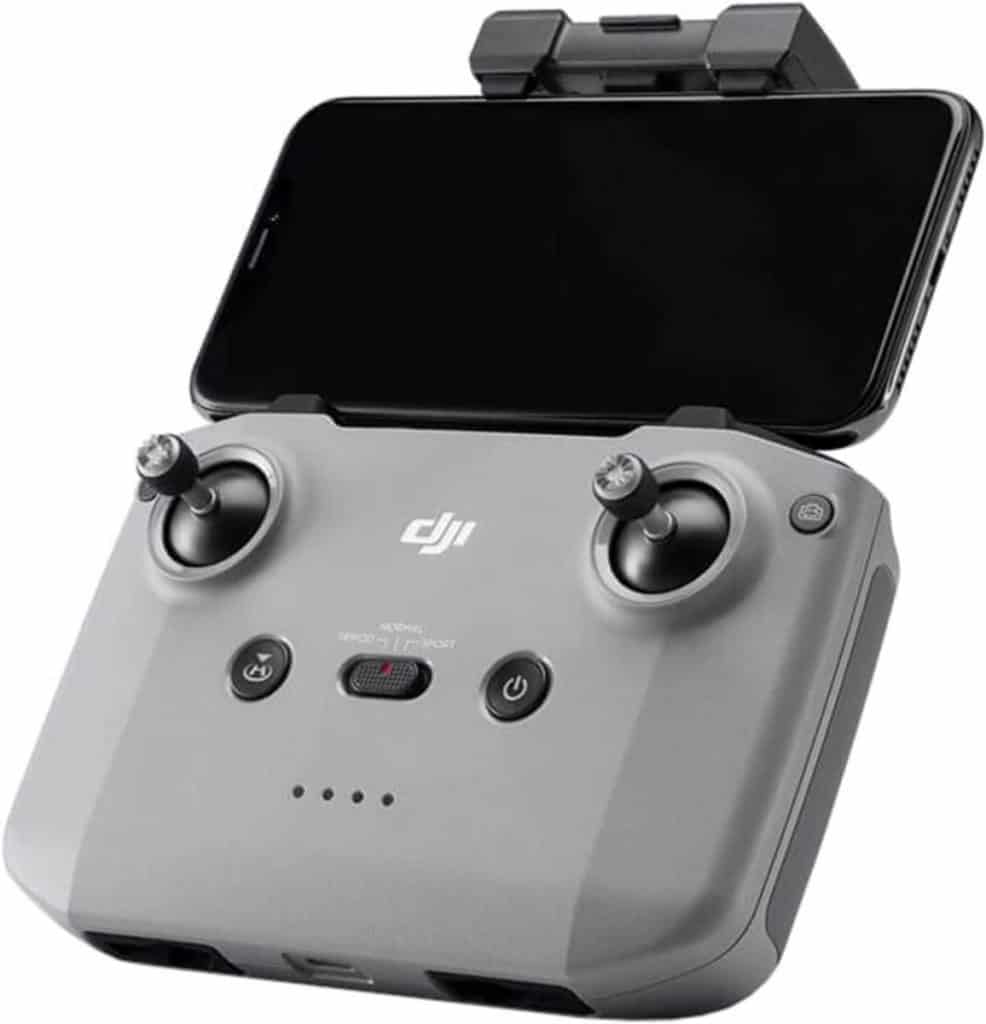
Both remote controls have two joysticks that can be used to control the drone, and they both have a spot for the insertion of a smartphone so that you can view the heads-up display and access software options for flying the drone and controlling the camera.
Autel remote
You will notice that the Autel remote control seems much more focused on portability and can be folded down to a very small form factor. It also has much more information on the screen and relies less on the smartphone for displaying things like height and distance away from the remote control or takeoff spot.
The Autel remote controller can hold a mobile device up to 84 mm in length and 13 mm in thickness. You can purchase tablet holders to extend the display size.
An annoying cable connects from the bottom of the remote to the side of your smart device. I find this annoying, and it sometimes gets in the way of the palms of my hands while holding the remote.
DJI remote
The DJI remote is much boxier and does not fold down to a small form factor. There are very limited buttons on the remote control, and all flight analytics are displayed on the Smart device. On the front, it has a very simple switch in the middle for changing between modes and two buttons to power on and initiate a return to home.
The smart device is better integrated into the remote control and has a significant battery life, so you do not have to charge the remote control very often.
Overall, the DJI remote control looks more robust and ergonomic even though it is a much bulkier form factor.
Smart controllers
Both companies have created smart controllers with screens embedded in the remote controls so that you do not have to use a smart device to view the first-person video stream or access the software features.
The YouTube video below shows a fantastic hands-on comparison of the two different types of remote control.
you will notice that the Autel smart controller is significantly larger than the DJI smart controller, so if you need a bigger and clearer view of the first-person video stream, it may be a better option.
However, I feel that DJI has been able to balance the usability, ease of transport, and comfortable viewing size perfectly.
With the bigger screen comes extra weight, and for extended flight times (up to 40 minutes), the smaller smart device made by DJI is certainly a more comfortable device to hold.
Drone ranges from DJI vs Autel
One of the reasons that I think DJI has lost some market share to drone companies such as Autel is because the competitors have started expanding their consumer drone range to smaller and more user-friendly sizes.
Given that there is some bureaucratic red tape around 250 g or more drones, the purchase of mini drones is becoming increasingly popular.
Here is the current range of mini drones through to enterprise-level drones each company produces.
| Range | DJI | Autel |
| Mini drones | Mini SE Mini 2 Mini 3 Pro | Evo Nano Evo Nano + |
| Mid-range consumer drones | Mavic Air 2 Mavic Air 2S | Evo Lite Evo Lite+ |
| Professional drones | Mavic 3 Phantom 4 Pro | Evo 2 Series |
| Enterprise drones | Inspire 2 |
DJI is the latest release of the mini 3 Pro shows that they are a forward-thinking company and understand that as technology is able to be miniaturised consumers expect more from even their smallest drones. The mini 3 Pro is an incredible drone at a reasonable price in an incredibly small form factor.
Any drone company that is going to start producing mini drones need to bring something special to compete with the Mini 3 Pro.
To understand why DJI got a great head start over the competition here are is a little bit of history on both of the companies. You will notice that DJI had a full eight years head start over Autel but in recent years Autel has caught up with the capabilities being introduced in the drone ecosystem.
I imagine that they will slowly take more market share from DJI over the coming years.
DJI company overview
The DJI company was founded in 2006 by its founder Frank Wang. Wang built the first prototypes of DJI projects in his dorm room and funded the company early on in its life by selling the flight control components to universities and Chinese electronic companies.
He use that to move the company to a better location and with the help of a family friend was able to grow the business quickly. The first drone that DJI released was the DJI Phantom in 2013 stop the idea was that it was an entry-level drone which was far more user-friendly than other drones on the market at the time.
There is no doubt that DJI is a leading company when it comes to understanding what its customers want and providing it in a cost-effective and user-friendly package. The DJI company has enterprise, agricultural, and video production level drones which makes them incredibly versatile as a drone company. The technology they invent for one area can easily spill over to advances in the next which makes them a powerhouse of research and development and innovative products.
Nowadays, DJI does not offer many budget drones. It has specialised in the consumer level and semiprofessional drone models, which they bring a new model each year.
The DJI Mavic series is a popular consumer-level drone, and they also have professional-level quality drones from the phantom series upwards. Every drone influencer you have seen on Instagram or other social media sites has been using a DJI drone to capture inspiring footage.
Is DJI the best drone company?
DJI is certainly the oldest successful drone company in the current market. However, whether or not DJI is the best drone company comes down to the sorts of drones that they are currently producing.
Yes, DJI is the best drone company if you want to pick from a wide range of drones and you want a well-tested and robust interface to interact with when you are flying. DJI is currently beating the competition due to the highly capable drones they are producing.
Autel company overview
Autel Robotics was founded in 2014 with the vision of being able to develop unmanned aerial technologies for recreational and commercial applications.
In 2015 they released a drone called the X star and moved on to the EVO series of drones afterwards.
There recent release of the lite, Nano and subset drones means that they will slowly eat into the mini drone market. A wise move by this company because that is where there is less red tape and the drones are becoming increasingly spec’ed out at affordable prices
Wrapping up
Both drone manufacturers are incredibly trustworthy and creating incredible drones with top-of-the-range capabilities.
Whether or not Autel will be able to eat DJI and gain extra market share in the near future is yet to be determined, but I can assure you that if you purchase a drone from either company, you will be incredibly happy.
Arguably, DJI is the better of the two drone companies at the moment to purchase a drone from. Not only is there a much larger ecosystem of forums and support but their user interface is much better tested, and they have been able to refine the flight app so that it is as intuitive as ever.
Those wanting better cameras and more professional photos may look towards the Evo series from Autel to really push the limits of their creativity and aerial photographs and videos.
With the recent release from DJI of the Mavic 3, Autel will have two produce something pretty phenomenal in their next drone release to truly capture market share and take some of the mini drone market away from DJI.
